Table of Contents
The backflip, an iconic acrobatic maneuver, has captivated audiences for centuries. With its combination of grace, power, and athleticism, it's a move that inspires awe and admiration. Whether you're a gymnast, a martial artist, or simply someone looking to push your physical limits, learning How to do a backflip is an exciting and rewarding challenge. This comprehensive guide will take you on a journey from the basics of the backflip to advanced techniques and variations. With detailed instructions, tips, and a focus on safety, you'll gain the knowledge and confidence to master this exhilarating skill.
How to Do a Backflip: Mastering a Daring Gymnastics Maneuver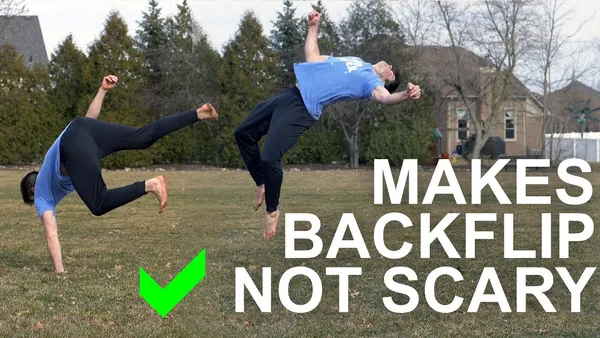
I. Importance of Training and Building Strength
Importance of Training and Building Strength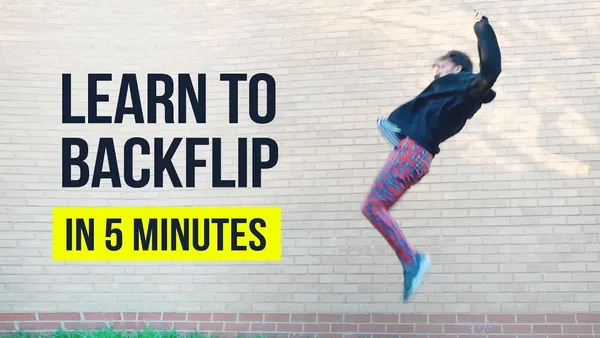
Whether you're an aspiring gymnast or simply looking to enhance your overall fitness, developing strength and training your body are essential components of achieving your goals. How to Train Like a Gymnast offers a comprehensive guide on creating an effective training routine, including tips on setting realistic goals, choosing the right exercises, and tracking your progress.
Building strength is not just about lifting heavy weights; it involves a combination of exercises targeting various muscle groups and developing core stability. By focusing on compound movements, you can engage multiple muscle groups simultaneously and maximize your workout efficiency. The Best Gymnastics Exercises for Core Strength provides a range of exercises specifically designed to strengthen your core, improving your overall balance and stability.
Flexibility and Mobility
In addition to strength training, flexibility and mobility are crucial for gymnasts. How to Improve Your Flexibility and Mobility with Gymnastics provides insights into stretching techniques, dynamic exercises, and drills to enhance your range of motion and reduce the risk of injuries.
Stretching before and after workouts is a fundamental practice for gymnasts, helping to prevent muscle tightness and improve flexibility. By incorporating stretching into your routine, you can increase your muscle extensibility and reduce the risk of strains or pulls during your workouts.
Benefit | Description |
Improved Flexibility | Increased range of motion and elasticity of muscles. |
Reduced Risk of Injuries | Stretching helps prevent muscle tightness, strains, and pulls. |
Enhanced Performance | Stretching can improve muscle coordination and balance. |
Better Recovery | Stretching aids in muscle recovery after workouts. |
Reduced Muscle Soreness | Stretching helps relieve muscle tension and soreness. |
Importance of Drills
Drills are an integral part of gymnastics training, helping gymnasts refine their skills and techniques. The Best Gymnastics Drills provides a collection of drills for various gymnastic skills, including handstands, cartwheels, back handsprings, and more.
By incorporating drills into your training routine, you can improve your body awareness, coordination, and control. Drills also help you develop muscle memory, enabling you to perform skills more consistently and accurately.
- Handstand Drills: Improve your balance and control in the handstand position.
- Cartwheel Drills: Master the technique of cartwheels and gain confidence in your tumbling skills.
- Back Handspring Drills: Develop the strength and coordination required for back handsprings.
- Roundoff Drills: Learn the proper technique for roundoffs, a fundamental skill in gymnastics.
- Walkover Drills: Practice the walkover, a challenging yet essential skill in gymnastics.
Safety Considerations
Safety is paramount in gymnastics. The Most Common Gymnastics Injuries and How to Prevent Them addresses the most prevalent injuries in gymnastics and provides preventive measures to minimize the risk of accidents.
Gymnastics involves high-impact movements and complex skills, increasing the likelihood of injuries. By understanding the common injuries and implementing preventive measures, gymnasts can reduce the risk of getting hurt and ensure a safe training environment.
II. Break Down the Backflip
Break Down the Backflip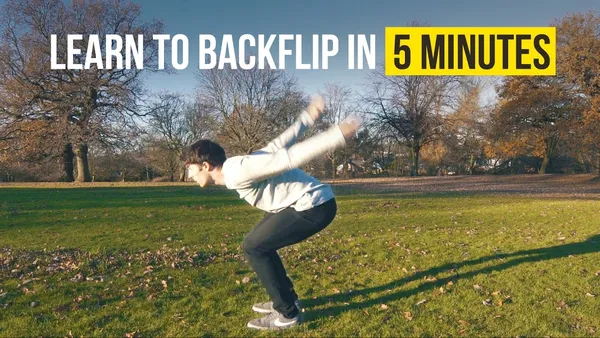
The Basics: Kicking Off and Committing to the Flip
At the outset of a backflip, the athlete takes a running start and kicks off forcefully. This supplies the momentum necessary to launch the body into the air. In conjunction with this kicking action, the gymnast simultaneously swings the arms backward and upward to generate additional energy. Once airborne, the gymnast commits to the flip by tucking the knees toward the chest and pulling the arms down to maximize body rotation.
Drill | Purpose |
Handstand Hold | Develops upper body strength and stability |
Bridge Exercise | Enhances flexibility and core strength |
Tuck Jump | Improves explosive power and coordination |
Checkout our more related posts about Best Gymnastics Equipment for Home Use and How to Improve Your Flexibility and Mobility with Gymnastics.
Rotation Control and Spotting Techniques
While in mid-air, controlling the rotation is paramount to landing safely. This is achieved by maintaining a tucked position and keeping the head tucked in. Additionally, the gymnast must spot the landing area by focusing on a fixed point on the ground. Upon landing, the gymnast dissipates the impact by absorbing it through the legs and spreading the force throughout the body.
Common Errors and Safety Considerations
- Insufficient Rotation: Failing to generate enough power during takeoff can lead to insufficient rotation, resulting in an incomplete flip.
- Over-Rotation: Conversely, excessive rotation can cause the gymnast to land on their head or neck, posing a serious safety risk.
- Improper Spotting: Not spotting the landing area properly can lead to disorientation and a loss of control during the flip.
Checkout our more related posts about The Most Common Gymnastics Injuries and How to Prevent Them and How to Choose the Right Gymnastics Leotard.
Tips for Beginners and Progression Exercises
For beginners, it's essential to master the basics of handstands, cartwheels, and round-offs before attempting a backflip. Developing strength and flexibility through regular training is also crucial. Progression exercises include practicing the backflip on a trampoline or into a foam pit, gradually transitioning to performing it on solid ground.
III. Start on a Trampoline
Start on a Trampoline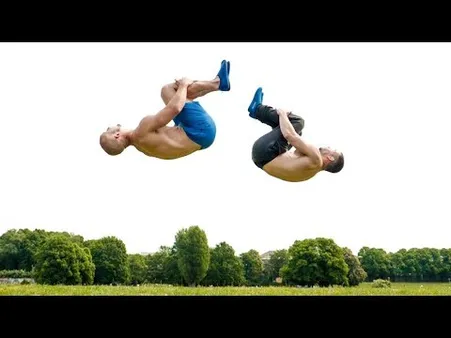
If you're a beginner, starting on a trampoline is a great way to get a feel for the motion of a backflip. The trampoline provides a safe and controlled environment to practice your technique without the risk of injury. Once you've mastered the basics on the trampoline, you can then move on to practicing on a soft surface, such as a gym mat or a pile of leaves.
Here are some tips for practicing a backflip on a trampoline:
- Start by practicing a front flip. This will help you get used to the feeling of flipping in the air.
- Once you're comfortable with front flips, start practicing backflips. Begin by tucking your knees into your chest and bringing your arms up to your head.
- As you flip, keep your body tight and your head tucked. Don't arch your back or throw your head back.
- Land on your feet with your knees bent and your arms extended.
With practice, you'll be able to land your backflips consistently and safely.
IV. Master the Basic Gymnastics Skills
Before you attempt a backflip, it's important to master the basic gymnastics skills, such as the handstand, cartwheel, and roundoff. These skills will help you develop the strength, coordination, and body awareness you need to perform a backflip safely.
To learn the handstand, start by standing with your feet shoulder-width apart and your arms extended overhead. Bend your knees and place your hands on the ground in front of you, shoulder-width apart. Step one foot forward and then the other, until you're in a straight line from your head to your heels. Hold the position for as long as you can.
To learn the cartwheel, start by standing with your feet shoulder-width apart and your arms extended to the sides. Bend your knees and swing your arms forward. As you swing your arms, step forward with one foot and then the other. Keep your body straight and your head up. Land on your feet with your knees bent and your arms extended.
To learn the roundoff, start by standing with your feet shoulder-width apart and your arms extended to the sides. Bend your knees and swing your arms forward. As you swing your arms, step forward with one foot and then the other. Keep your body straight and your head up. As you land, tuck your knees into your chest and bring your arms up to your head. Roll forward onto your back and then stand up.
Once you've mastered these basic skills, you'll be ready to start practicing the backflip.
Equipment | Benefits |
Gymnastics mat | Provides a safe and cushioned surface for practicing gymnastics skills. |
Balance beam | Helps develop balance and coordination. |
Uneven bars | Helps develop upper body strength and coordination. |
Vaulting horse | Helps develop leg strength and power. |
Rings | Helps develop grip strength and upper body strength. |
V. Choose the Right Location
When you're ready to practice your backflip, it's important to choose the right location. The best place to practice is a gym or gymnastics facility with a qualified instructor. If you don't have access to a gym, you can also practice on a soft surface, such as a gym mat or a pile of leaves.
Make sure the area you choose is free of obstacles and has enough space for you to safely practice your backflip.
Here are some tips for choosing the right location to practice your backflip:
- Choose a location that is free of obstacles, such as trees, rocks, and other objects that could cause injury.
- Choose a location that has a soft surface, such as a gym mat or a pile of leaves.
- Choose a location that is large enough for you to safely practice your backflip.
- If you're practicing in a gym, make sure you have a qualified instructor to supervise you.
With a little practice, you'll be able to land your backflips consistently and safely.
VI. Progress to the Foam Pit
Progress to the Foam Pit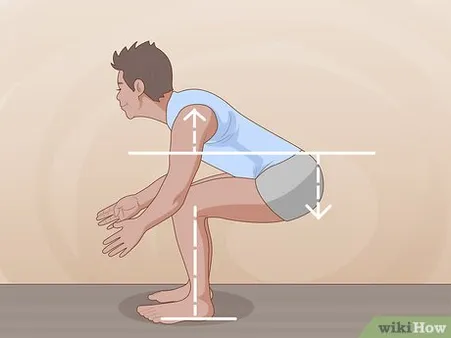
Upon mastering the basics, it's time to venture into the heart-stopping world of the foam pit. This specialized area, filled with soft, spongy foam cubes, allows gymnasts to practice and perfect their most daring aerial maneuvers without the fear of injury. Progressing to the foam pit signifies a significant milestone in a gymnast's journey, as it opens up a whole new realm of skills and the thrill of defying gravity. The Best Gymnastics Mats and Tumbling Tracks
Before delving into the foam pit, gymnasts must demonstrate proficiency in fundamental skills such as handstands, cartwheels, and round-offs. These skills provide the foundation for more advanced aerial maneuvers and ensure that gymnasts possess the necessary control and body awareness. Once these prerequisites are met, gymnasts can begin gradually introducing themselves to the foam pit under the watchful eye of a qualified coach. How to Learn the Basic Gymnastics Skills and Moves
Exercise | Benefits |
Foam Pit Safety Rules | Familiarize yourself with safety guidelines and techniques for proper and injury-free use of the foam pit. |
Dynamic Stretching | Enhance flexibility and range of motion, reducing the risk of injury. |
Foam Pit Etiquettes | Learn proper etiquette and protocols for sharing the foam pit and ensuring everyone's safety. |
Foam Pit Games and Activities | Engage in fun and creative games and activities that help develop gymnastic skills and coordination. |
Static Stretching | Improve muscle elasticity and flexibility, aiding in better performance and injury prevention. |
Initially, gymnasts start with simple skills like forward and backward rolls, gradually progressing to more complex maneuvers such as somersaults and flips. The foam pit provides a safe and forgiving environment for gymnasts to experiment, try new techniques, and push their boundaries. The Top Gymnastics Competitions and Events
As gymnasts gain confidence and mastery over their skills, they can begin incorporating variations and combinations, creating their unique routines. The foam pit becomes their playground, where they can unleash their creativity and showcase their athleticism. How to Do a Split
- Identify and overcome common fears associated with the foam pit.
- Develop spatial awareness to control body positioning and orientation during aerial maneuvers.
- Learn proper landing techniques to minimize impact and reduce the risk of injury.
- Practice spotting techniques to assist and protect fellow gymnasts during their routines.
- Work on mental focus and concentration to execute skills with precision and confidence.
Progressing to the foam pit is a significant milestone in a gymnast's journey, marking their entry into the realm of advanced aerial maneuvers. With dedication, perseverance, and a commitment to safety, gymnasts can unlock their full potential and soar through the air with grace and agility.
VII. Conclusion
As you embark on your dowel joinery journey, remember that practice makes perfect. Start with simple projects and gradually tackle more complex ones as your skills and confidence grow. Experiment with different types of wood, dowel sizes, and joint designs to discover the techniques that work best for you. With patience, dedication, and the knowledge gained from this comprehensive guide, you'll be able to create dowel joints that are not only strong and durable but also visually appealing. Embrace the art of dowel joinery and elevate your woodworking projects to new heights of craftsmanship.